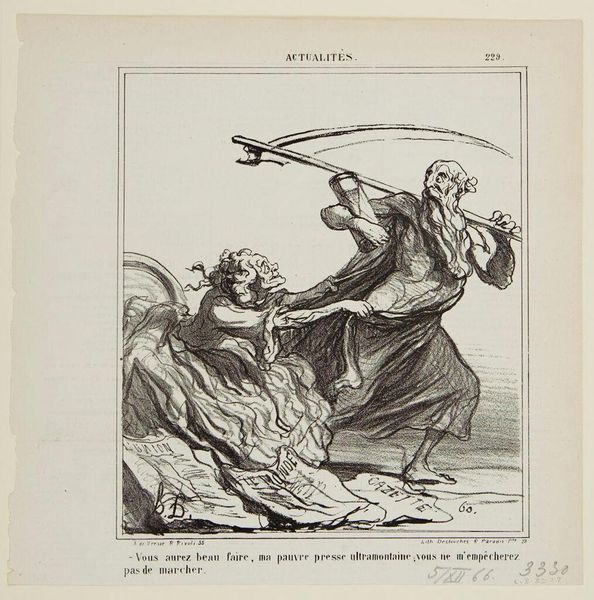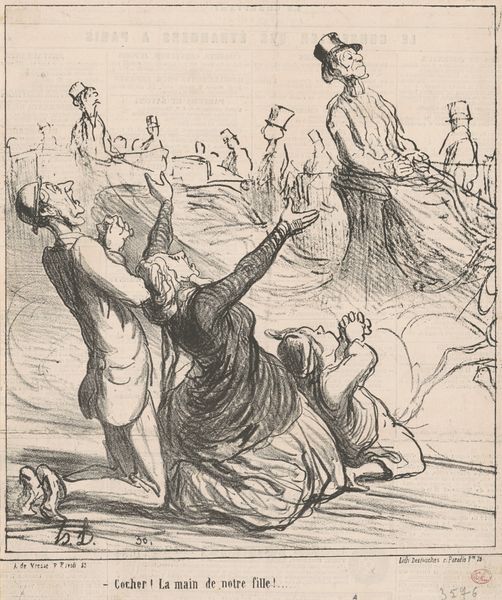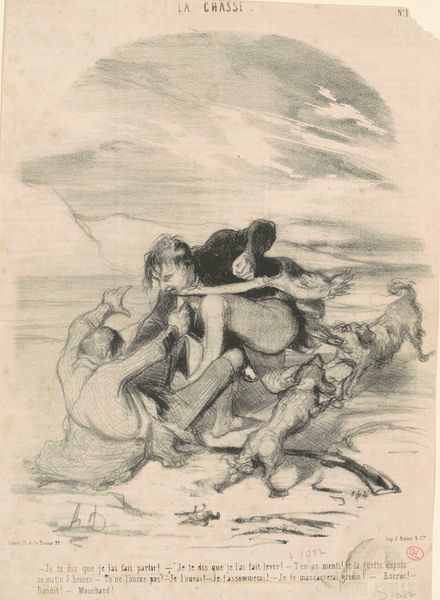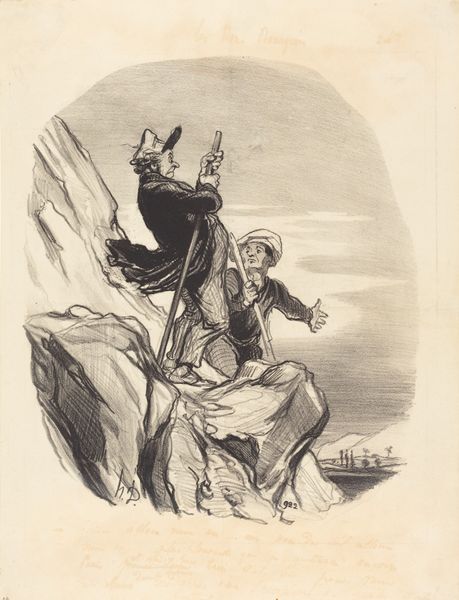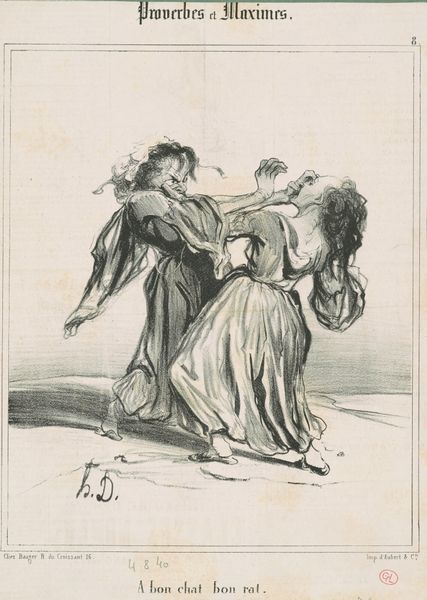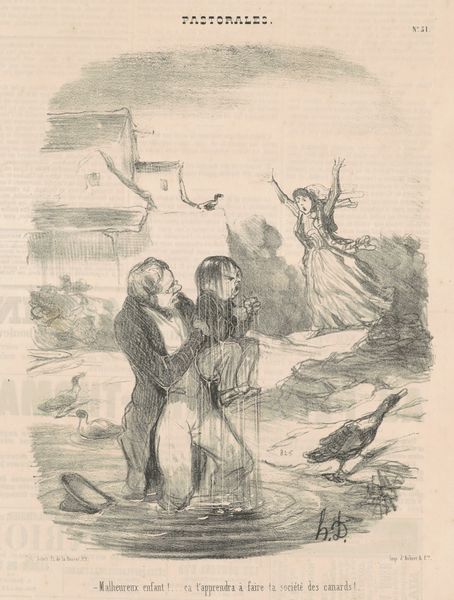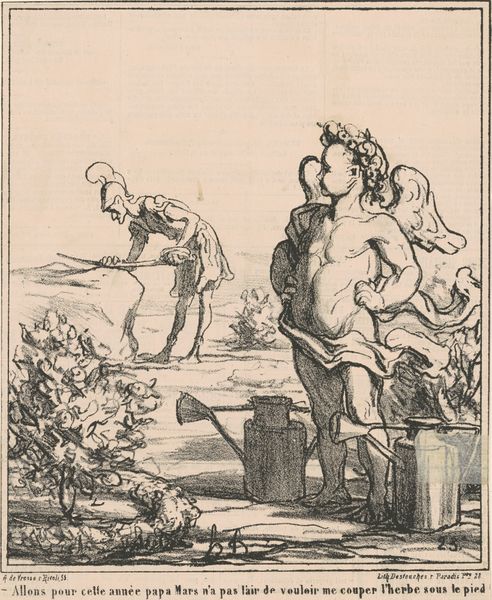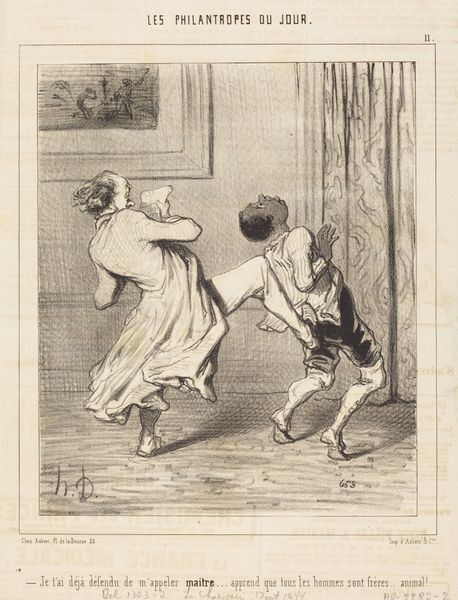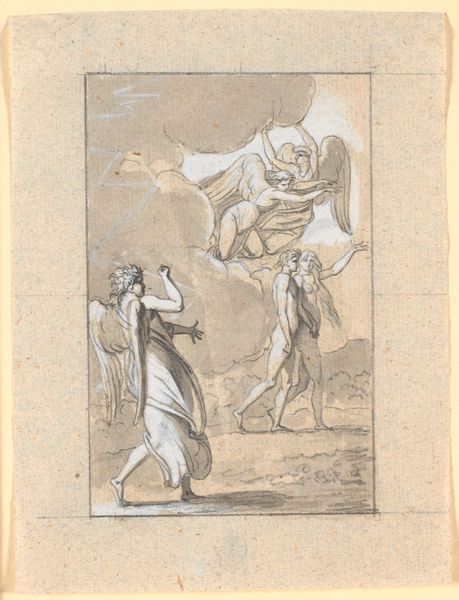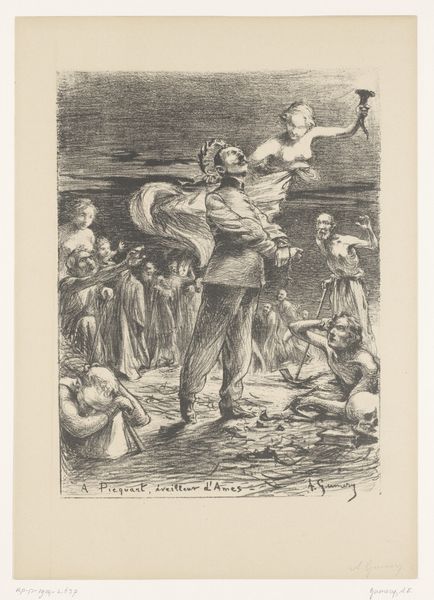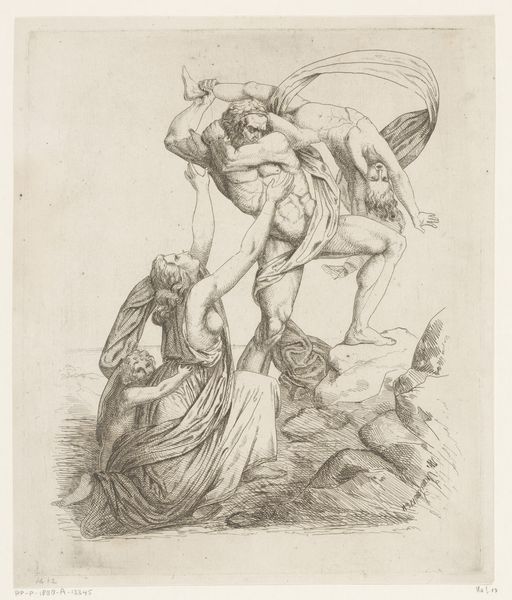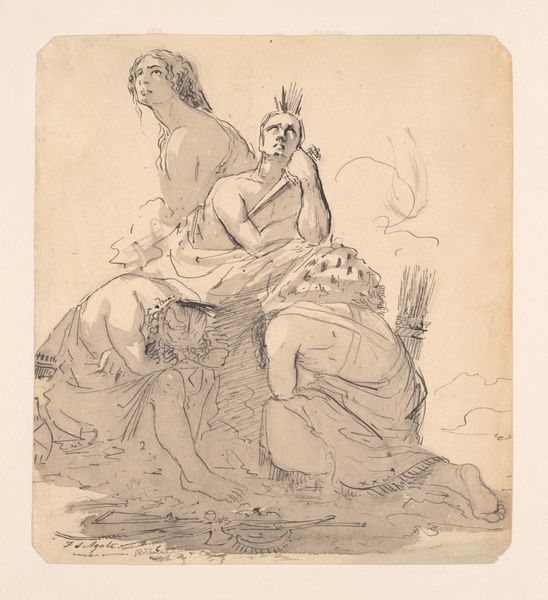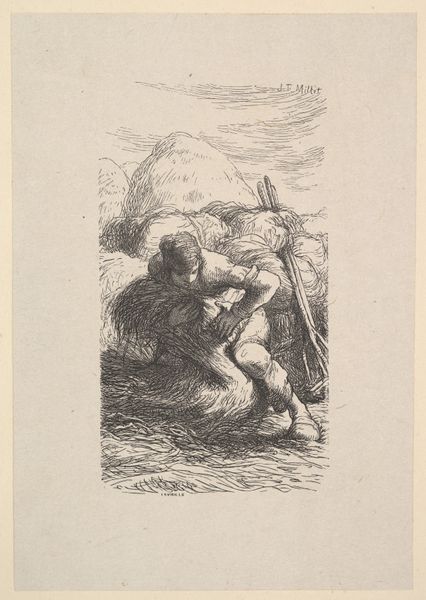
drawing, print, pencil
#
drawing
#
narrative-art
# print
#
caricature
#
pencil sketch
#
figuration
#
romanticism
#
pencil
#
line
#
history-painting
Copyright: National Gallery of Art: CC0 1.0
Editor: This is Honoré Daumier's "The Abduction of Helen," a 19th-century drawing, probably a print, in pencil. It looks almost like a caricature, and the whole scene feels quite absurd, but there is a sense of violence underneath the humour. How do you interpret this work? Curator: Daumier's work often uses humor as a veil for biting social commentary. The absurdity is precisely the point. This print, while seemingly depicting the classic tale of Helen's abduction, isn’t just about the Greek myth. Daumier often used classical themes to critique contemporary society. Consider the political climate of 19th-century France: What societal power structures do you think Daumier might be subverting here? Editor: I see what you mean. Maybe he's commenting on power imbalances in relationships or even broader issues like colonialism. The man carrying Helen almost seems nonchalant, while Helen herself seems…resigned? Curator: Precisely! That "nonchalance," as you put it, speaks volumes. Is it really about love and passion, or is it about power and ownership? Consider how women were often depicted—or rather, possessed—in art and literature of the time. Do you see this cartoon challenging that? Editor: It is unsettling! The male figure has none of the heroic bravado we would associate with a traditional Helen abduction depiction; instead he appears blasé, almost bored. Daumier has given me a lot to think about in relation to this imbalance. Curator: Exactly. By twisting the classical narrative, Daumier forces us to question those assumptions, unveiling perhaps uncomfortable truths about power, gender and representation itself. A drawing opens new thoughts! Editor: Definitely! Looking at it through this lens, it shifts the entire meaning of the piece. I’ll have to explore more Daumier now!
Comments
No comments
Be the first to comment and join the conversation on the ultimate creative platform.
